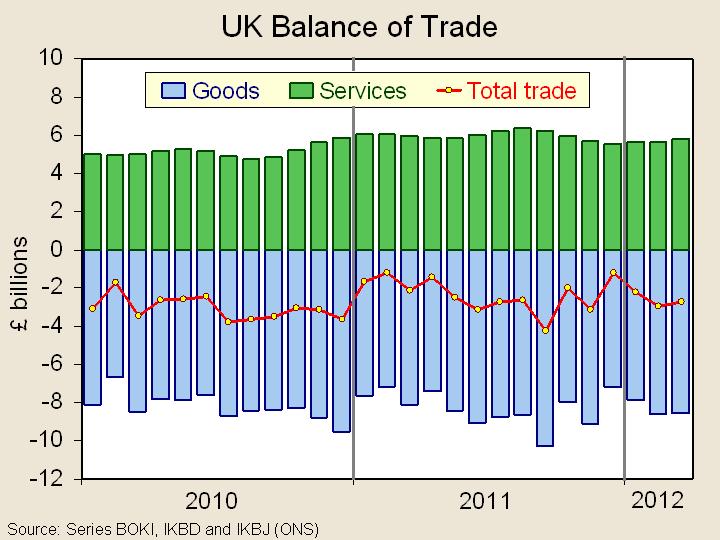That’s one deficit that’s been reduced
 The UK’s trade deficit narrowed in March to £2.74bn from £2.95bn in February. The goods deficit fell just slightly to £8.56bn from £8.59bn, but the services surplus rose more substantially to £5.83bn from £5.64bn.
The UK’s trade deficit narrowed in March to £2.74bn from £2.95bn in February. The goods deficit fell just slightly to £8.56bn from £8.59bn, but the services surplus rose more substantially to £5.83bn from £5.64bn.
So was this a sign of the UK economy’s relative weakness holding back the demand for imports? Or was it a sign of a recovering export sector, especially in services?
 And what of the coming months? What will be the effect of a growing crisis in the eurozone on (a) the sterling exchange rate, (b) the rate of economic growth outside the UK and (c) UK economic growth? And what will be the effect of these on the demand for imports and exports and on the trade balance? The following articles examine the issues.
And what of the coming months? What will be the effect of a growing crisis in the eurozone on (a) the sterling exchange rate, (b) the rate of economic growth outside the UK and (c) UK economic growth? And what will be the effect of these on the demand for imports and exports and on the trade balance? The following articles examine the issues.
(For a PowerPoint of the above chart, click on the following link: Balance of trade)
Articles
UK goods trade deficit stable as exports to non-EU countries rebound Reuters (15/5/12)
UK trade deficit narrows in March to £2.7bn BBC News (15/5/12)
Exports close UK trade deficit Guardian (15/5/12)
First trade surplus in cars since 1976 The Telegraph, Emma Rowley (15/5/12)
UK trade deficit narrows in March Fresh Business Thinking, Marcus Leach (15/5/12)
ONS Release
UK Trade, March 2012 ONS Release (15/5/12)
Questions
- Distinguish between the balance on trade in goods, the balance of trade and the balance on current account.
- Why did the UK’s trade deficit fall in March 2012?
- Why did the UK experience its first trade surplus in cars since 1976?
- What is likely to happen to the UK’s balance of trade in the coming months? How is the income elasticity of demand for UK exports and imports relevant to the answer?
- What has been happening recently to the sterling exchange rate? How will this impact on the UK’s balance of trade? How will the size of this impact depend on the price elasticity of demand and supply for imports and exports?